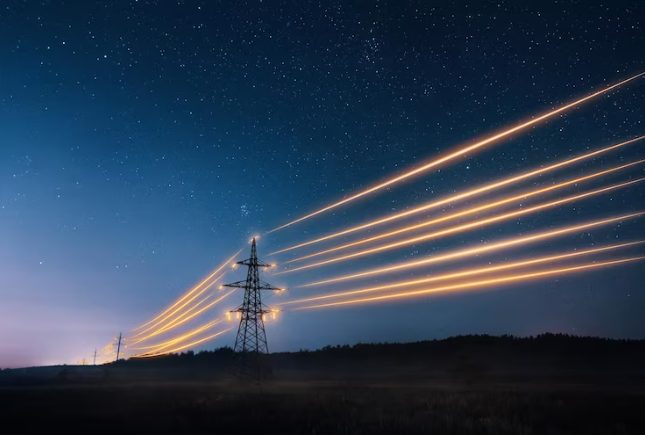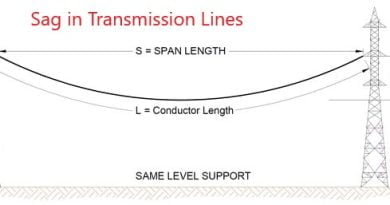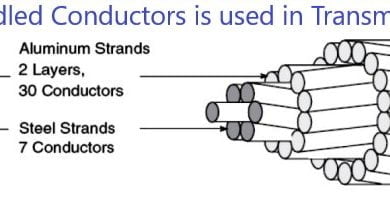What is High Voltage Direct Current Transmission (HVDC)? Advantages, and Disadvantages
What is High Voltage Direct Current Transmission (HVDC)? Advantages and Disadvantages
Overview
High Voltage Direct Current (HVDC) transmission refers to the long-distance transmission of electricity using DC instead of AC. HVDC enables efficient power transmission over very long distances by overcoming the limitations of AC systems. However, HVDC also comes with its challenges and costs.
High Voltage Direct Current (HVDC) technology has emerged as a game-changer in the electrical power transmission world. While Alternating Current (AC) has traditionally been the dominant method for transmitting electricity, HVDC offers unique advantages that are increasingly shaping how we move power over long distances. In this article, we’ll explore what HVDC transmission is, how it works, its advantages and disadvantages, and its growing importance in modern power systems.
Understanding HVDC Transmission
Defining HVDC
High Voltage Direct Current (HVDC) transmission is a technology that enables the efficient transmission of electrical power over long distances using direct current (DC) instead of the more commonly used alternating current (AC).
How HVDC Transmission Works
HVDC systems typically consist of two converter stations connected by overhead lines, underground cables, or underwater cables. These stations convert AC power to DC at the sending end and then back to AC at the receiving end, allowing power to be transmitted with minimal losses over vast distances.
HVDC uses high-voltage DC for bulk power transmission. Key steps include:
Converting AC to DC
AC electricity from a generation source is converted to DC using power electronic converters.
Transmitting over Long Distances
The DC power flows through overhead lines or underground/submarine cables across a long-distance corridor.
Converting Back to AC
At the receiving end, another converter station transforms the DC back into AC for distribution.
Advantages of HVDC Transmission
HVDC provides significant benefits compared to high-voltage AC transmission:
Lower Losses Over Long Distances
HVDC losses are 3-4X lower than AC over hundreds of miles, enabling economic long-distance transmission.
Asynchronous Grid Interconnections
HVDC links efficiently connect AC networks operating at different frequencies or phases.
Controls Power Flow
Power flow in HVDC lines can be rapidly adjusted to stabilize the grid and optimize trade.
Submarine Cable Transmission
HVDC avoids excess charging current losses that constrain AC submarine cables.
Efficient Long-Distance Power Transmission
HVDC is highly efficient for transmitting electricity over thousands of kilometers. It experiences fewer losses than AC transmission, making it ideal for interconnecting distant regions.
Better Integration of Renewable Energy
As renewable energy sources like wind and solar farms are often located in remote areas, HVDC technology facilitates the integration of clean energy into existing power grids. It allows efficient transmission of renewable power to where it’s needed most.
Reduced Electrical Losses
HVDC transmission experiences lower electrical losses during long-distance power transmission. This results in less wasted energy and reduced environmental impact.
Disadvantages of HVDC Transmission
HVDC also has some downsides:
Requires Converter Stations
Expensive converter stations are needed at each end to change HVDC to/from AC.
Higher Costs Than AC Lines
HVDC has a higher upfront investment than AC for shorter distances below 600 mi.
Limitations With Fault Isolation
Detecting and isolating DC line faults is more complex than with AC systems.
Requires Advanced Control Systems
HVDC needs fast communication and control systems for stable operation.
HVDC Applications
HVDC is increasingly applied in situations where AC is limited:
Long Distance Power Transmission
HVDC efficiently transmits gigawatts of power over distances >600 mi.
Asynchronous Ties
HVDC links like the Pacific DC Intertie connect regional 60/50Hz grids.
Connection of Renewable Energy
Remote wind/solar farms use HVDC to feed power to distant load centers.
Providing Reliability
HVDC reinforcement strengthens AC networks against disturbances and failures.
High Initial Costs
The construction of HVDC converter stations and associated infrastructure can be expensive. This initial cost can be a barrier to implementing HVDC systems.
Complex Converter Stations
HVDC systems require sophisticated converter stations at both ends to convert AC to DC and back again. These stations can be complex to design and maintain.
Environmental Impact
Installing HVDC cables, especially submarine cables, can have environmental implications. Careful consideration is required to minimize disruption to ecosystems.
HVDC vs. HVAC Transmission
Comparison of Key Differences
We’ll compare HVDC and High Voltage Alternating Current (HVAC) transmission to highlight HVDC technology’s unique features and advantages.
Applications of HVDC Technology
Interconnecting Power Grids
HVDC is often used to connect separate AC power grids, enabling the exchange of electricity between regions and countries.
Submarine Power Cables
Submarine HVDC cables are employed to transmit power across bodies of water, making it feasible to connect islands or distant coastlines to the mainland grid.
Renewable Energy Projects
HVDC is crucial in delivering renewable energy from remote locations to urban centers, reducing reliance on fossil fuels.
Challenges and Future Trends
Grid Integration Challenges
As power systems evolve and incorporate more renewables, challenges related to grid integration must be addressed to ensure the smooth operation of HVDC systems.
Technological Advancements
Ongoing research and development in HVDC technology aim to improve efficiency, reduce costs, and make this power transmission method even more accessible.
Conclusion
Although more complex, HVDC enables efficient bulk power transmission over very long distances not practical with AC alone. HVDC continues to grow as grid interconnections expand globally. The advantages over AC make HVDC ideal for linking renewable energy hubs to distant metropolitan demand centers. In conclusion, High Voltage Direct Current (HVDC) transmission is revolutionizing how we transmit electricity over long distances. Its efficiency, ability to integrate renewable energy, and reduced losses make it an essential technology in modern power systems. While it comes with challenges and costs, HVDC’s advantages propel it into a central role in shaping the future of electrical power transmission.
Frequently Asked Questions (FAQs)
- What is the primary difference between HVDC and HVAC transmission?
- HVDC uses direct current, while HVAC uses alternating current. HVDC is more efficient for long-distance transmission.
- Why is HVDC technology beneficial for renewable energy integration?
- HVDC allows for efficient renewable energy transmission from remote locations to urban centers, reducing energy loss.
- What are the environmental considerations when using HVDC technology?
- Installing HVDC cables, especially submarine cables, can impact ecosystems, so environmental factors must be carefully managed.
- What are the challenges associated with grid integration of HVDC systems?
- Grid integration challenges include ensuring the stability and reliability of power systems that incorporate HVDC technology.
- What is the role of converter stations in HVDC transmission?
- Converter stations are essential components that convert AC power to DC at the sending end and then back to AC at the receiving end of the HVDC transmission line.
- How does HVDC technology reduce electrical losses during transmission?
- HVDC experiences fewer electrical losses over long distances than AC transmission, resulting in less wasted energy.
- Are there ongoing efforts to improve HVDC technology?
- Yes, ongoing research and development aim to enhance the efficiency and cost-effectiveness of HVDC technology.
- What is the significance of HVDC submarine cables?
- HVDC submarine cables enable power transmission across bodies of water, connecting islands and distant coastlines to the mainland grid.
- Why is HVDC transmission becoming increasingly important in modern power systems?
- HVDC’s efficiency, renewable energy integration capabilities, and reduced losses make it a crucial technology in modern power systems.
- How does HVDC technology impact the cost of long-distance power transmission?
- While HVDC systems have high initial costs, their efficiency reduces operational costs and lowers energy losses over long-distance transmission.
11. What are the typical voltage levels for HVDC?
Common HVDC voltages range from 100 kV to 800 kV. Experimental systems up to 1,100 kV have been demonstrated.
12. How much lower are HVDC losses than AC?
HVDC line losses are typically 3-4 times lower than AC transmission losses, depending on voltage and power levels.
13. What is the maximum transmission distance for EHV AC?
The upper limit for ultra-high voltage AC transmission is around 1000-1500 miles. HVDC has no technical distance limit.
14. What are some large HVDC projects worldwide?
Major projects include the Xiangjiaba-Shanghai 800 kV 6400 MW link and the Rio Madeira +/- 600 kV 3000 MW link in Brazil.
15. How quickly can power flow be changed in HVDC?
HVDC allows rapid power flow control, with responses adjusted in under a second. AC line power flow changes are much slower.




